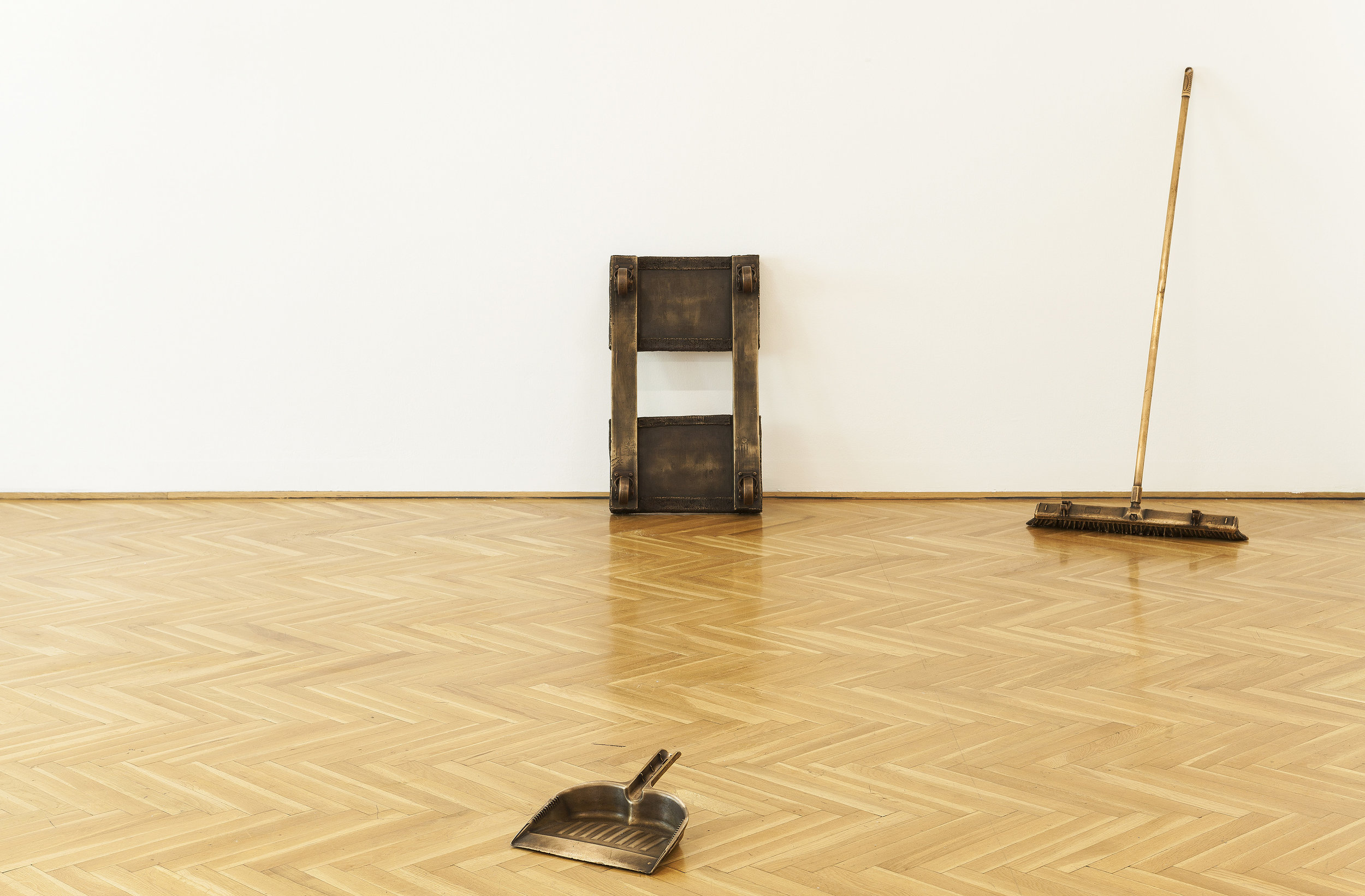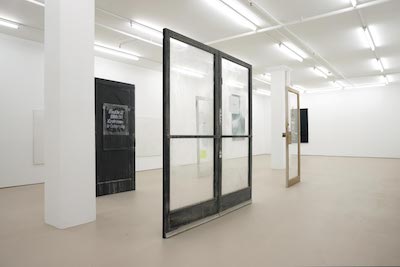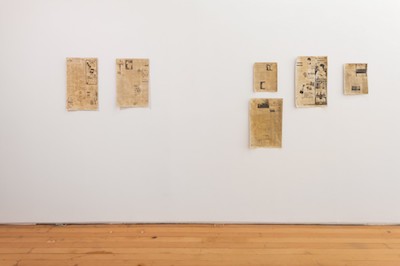SculptureCenter
New York
April 29 – July 29, 2019
Fiona Connor’s exhibition at SculptureCenter is composed of three pieces—two installed or taking place in the museum, and the other in the surrounding neighborhood, away from the spectator’s involvement. The first is a set of bronze-cast sculptures throughout the lower level galleries and courtyard; the second is the organization of an annual window cleaning in a nearby apartment, signaled to passersby by a modest plaque on the building; and lastly, collective workshops that Connor organized at the museum to produce an artist book. In thinking how such divergent objects or actions coalesce, it is helpful to consider how each piece analyzes distinct forms of value production within the exhibitionary art system: value produced via the tools of institutional spectatorship and accessibility, maintenance, and collective participation. That being said, a primary concern that emerges is how to reconcile different models of organizing work against forces that foreclose collective potentiality.
In the years since the “liberal counter-reformation”—as French philosopher Gilles Châtelet referred to the neoliberal, reactionary global politics that Margaret Thatcher and Ronald Reagan built atop the beaten corpse of May ’68—work has become increasingly invisible and devastatingly precarious. Given this historical context, attention to “labor” in art, as elsewhere, has become ubiquitous. Rarely, however, is this interest organized in a way that mobilizes across various axes of division; most often such attention speculates on other imaginaries—the troubled legacy of what was once referred to as “social practice” is perhaps the best example. When Connor and I discussed this concern over the phone, she remarked that many artistic projects around work as of late often fall for clichés (I think here of a common impulse to fetishize the working class or, worse yet, poverty), and that they often “reinforce categorizations or hierarchies.” On the latter point, consider the potential dangers in reifying the wage contract when agitating to recognize forms of typically invisibilized work. Connor’s exhibition proposes an elegant corrective (albeit mitigated by its institutional support): an analysis of the “latent heat of certain actions,” as she put it. I take this term to refer to the unrealized collective energy embedded in all our work, including attention, and the products or value that result from it. Connor’s move then, is to show this heat, in its sites of display, its geographic context, and its waste—three themes that can be used to analyze the varied acts of the exhibition.




















